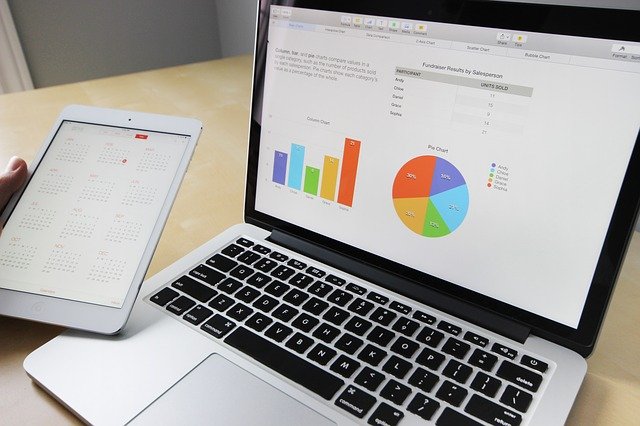Accounting is the process used to identify, record, and communicate finances and financial activities in businesses and organizations. Accounting is often referred to as the “language of business”. Accounting records and tracks financial transactions and business events showing what a business owns and what it owes others.
1. Cash Account
All your business transactions pass through the Cash account, often bookkeepers will use two journals, Cash Receipts, and Cash Disbursements, to track the activity.
2. Accounts Receivable
If your company sells products or services and doesn’t collect payment immediately, you have “receivables,” or money due from customers. It is important that you track Accounts Receivable and keep them up to date and send timely and accurate bills or invoices.
3. Inventory
Unsold products must be carefully accounted for and tracked. The numbers in your books should be periodically tested by doing physical counts of the inventory on hand.
4. Accounts Payable
accounts payable records what the business owes to others such as vendors. Good record keeping will help you to keep track of money going out to pay timely payments and avoid paying someone twice! And possibly save you money since some businesses will offer a discount on timely payments,
5. Loans Payable
If you’ve borrowed money to buy equipment, vehicles, furniture, or other items for your business, this account tracks payments and due dates.
6. Sales
The Sales account tracks all incoming revenue from what you sell. Recording sales in a timely and accurate manner is critical to knowing where your business stands at a given point in your business.
7. Purchases
The Purchasing Account tracks any raw materials or finished goods that you buy for your business. This account is used in calculating the “Cost of Goods Sold” (COGS), which is subtracted from Sales to determine your company’s gross profit.
8. Payroll Expenses
Payroll expense is the number of salaries and wages paid to employees in exchange for services rendered by them to a business. The term may also be assumed to include the cost of all related payroll taxes, such as the employer’s matching payments for Medicare and social security. Keeping this account accurate and up to date is essential for meeting tax and other government reporting requirements.
9. Owner’s Equity
Owner equity tracks the amount an owner (or owners) puts into the business. Also referred to as net assets, owner equity reflects the amount of money an owner has once liabilities are subtracted from assets.
10. Retained Earnings
The Retained Earnings account tracks any company profits that are reinvested in the business and are not paid out to the owners. Retained earnings are cumulative, which means they appear as a running total of money that has been retained since the company started. This account is very important to investors and lenders who want to track how the company has performed over time.
The Five Basic Types of Accounts in Accounting:
- Assets, what the business owns
- Liabilities, what the business owes
- Revenues or income, money earned by the business, usually through sales
- Expenses necessary to run the business
- Equity is liabilities, subtracted from assets = the business’s net worth
Basic Accounting Equation
Accounting is more about learning concepts and methods than about adding and subtracting numbers. If you understand the basics you’ll be well on your way to understanding accounting. There are a few basic accounting terms that are important to understand.
The first term is an account
An account is a record in the accounting system used to collect and store business transactions.
Examples of accounts an organization may use are
……Sales,…
…Equipment,…
…Office Supplies,…
…Utilities,…
Think of an account as a way to store information. For example, if you had a large container of fruits, oranges, apples, and peaches to sort, each type of fruit would be sorted into a different carton that would represent its own account.
You would have one account for each type of fruit. After you had emptied the large container of fruits by sorting each fruit into its carton, or account, you could then total the amounts in each account. Then, you would know how many oranges,
apples, and peaches, are in each account and could easily determine the cumulative amount of all accounts.
The Second Term is Transactions
Another important term is “transaction”. Transactions are events that affect an organization financially or cause some kind of financial change. Examples of transactions that an organization might record in its accounting system are the purchase of office supplies such as paper, or a payment to the utility company for the prior month’s electric bill.
The Basic Accounting Equation is
…...Assets……equal Liabilities……plus Equity.
This equation represents the relationship between these three categories. This basic equation guides organizations when recording and reporting their financial transactions. If you are new to accounting it is important to memorize this fundamental concept.
Assets, liabilities, and equity
Assets, liabilities, and equity are 3 accounting terms used to identify what an organization owns and what it owes others.
Assets are an organization’s resources or what it owns. (e.g., accounts receivable, inventory)
Liabilities are claims on the organization or what it owes others. (e.g., accounts payable, loans)
Equity or capital, which is also referred to as net assets. Equity is what remains after all liabilities or debts of the organization are paid. If you take the organization’s total assets and subtract its total liabilities you would then know how much equity remains.
This basic equation provides a way to measure a company’s profitability or lack of profitability. It also states assets must always equal liabilities plus equity. In accounting, this equation should always be followed and the rules of the equation should never be broken.
